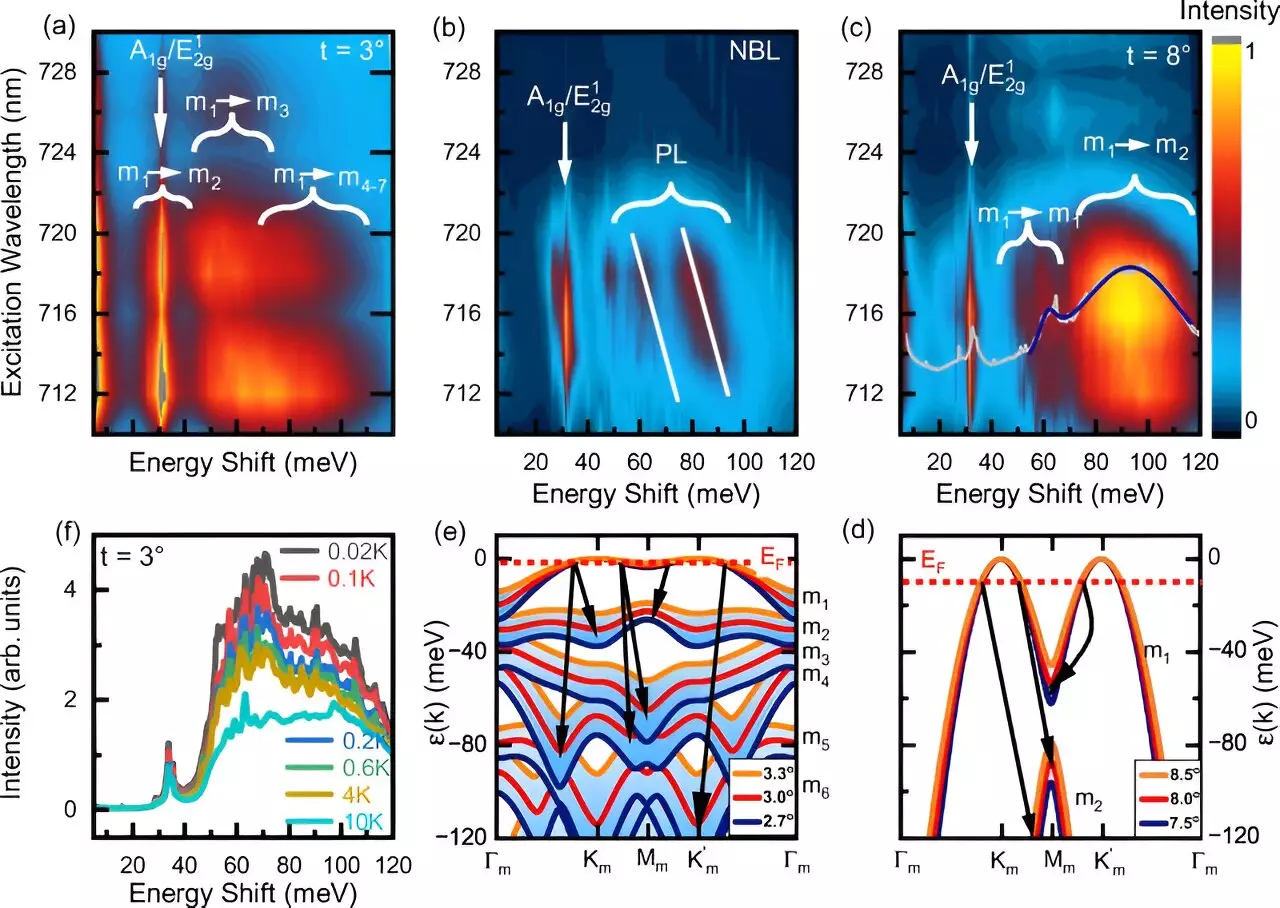In the realm of material science, the concept of thickness plays a crucial role in determining the properties of a material. When a material is made increasingly thinner, it exhibits a remarkable transformation. Two-dimensional materials consisting of only one or two layers of molecules demonstrate distinct characteristics compared to their bulk counterparts. A team of researchers led by physicist Prof. Ursula Wurstbauer from the University of Münster delves into the realm of two-dimensional crystals to understand how their properties can be manipulated to exhibit behaviors such as insulating, conducting electricity, superconductivity, or ferromagnetism.
The key to influencing the properties of two-dimensional crystals lies in understanding the interactions between the charge carriers, typically electrons, and the energy landscape of the crystals. The research team has successfully generated and quantitatively demonstrated collective excitations of charge carriers within various energy landscapes. By placing two layers of a two-dimensional crystal on top of each other and slightly twisting them, geometric patterns known as moiré patterns emerge. These patterns alter the energy landscape, causing electrons to move at a slower pace, thereby fostering intense interactions among them.
The phenomena observed in two-dimensional crystals can be likened to the chaotic movements of dancers in a disco, as explained by Wurstbauer. Unlike the orderly dance patterns in standard dancing, electrons exhibit unique behaviors in moiré patterns. The electrons’ movements are heavily dependent on the pattern, the number of charge carriers present, and the resulting energy landscape. Electrons within moiré patterns interact with each other in ways that lead to strongly correlated behavior, forming distinct correlations based on the specific pattern and electron count.
The properties exhibited by these two-dimensional materials not only captivate researchers in fundamental research but also hold promise for innovative applications in quantum technology and the development of neuromorphic components and circuits. The research team, in collaboration with scientists from various institutions, combined experimental work with theoretical analyses to prepare and analyze different two-dimensional crystals such as graphene, molybdenum diselenide, and tungsten diselenide. Optical spectroscopy methods at cryogenic temperatures were employed to study the samples, utilizing techniques like resonant inelastic light scattering spectroscopy.
By unraveling the mysteries of two-dimensional crystals and exploring their impact on electronic behavior, researchers like Prof. Ursula Wurstbauer open new pathways for the advancement of materials science and technology. The intricate dance of electrons within these crystal structures not only enriches our understanding of fundamental physics but also paves the way for transformative applications in the realm of quantum technology and beyond.


Leave a Reply